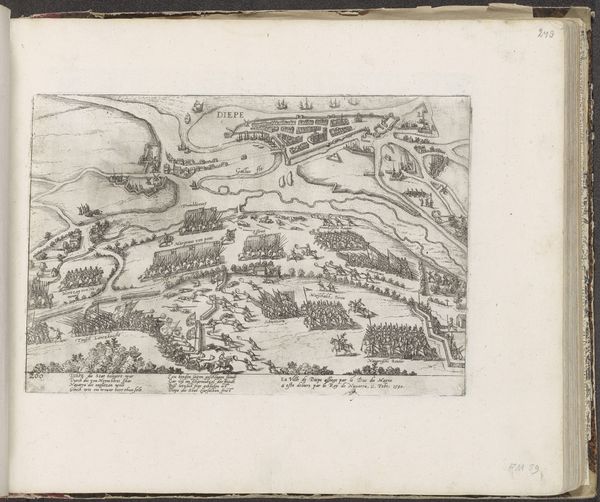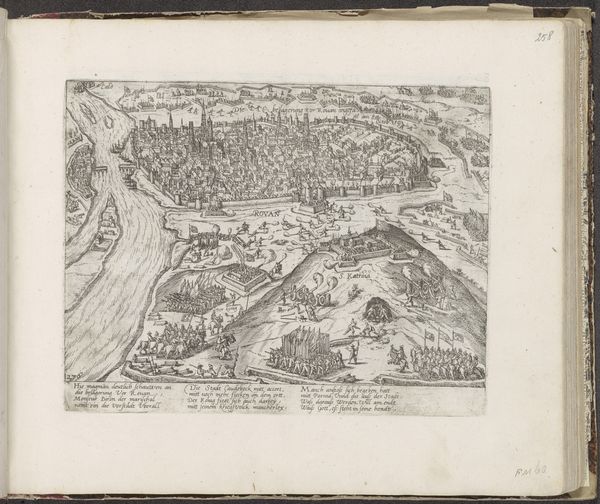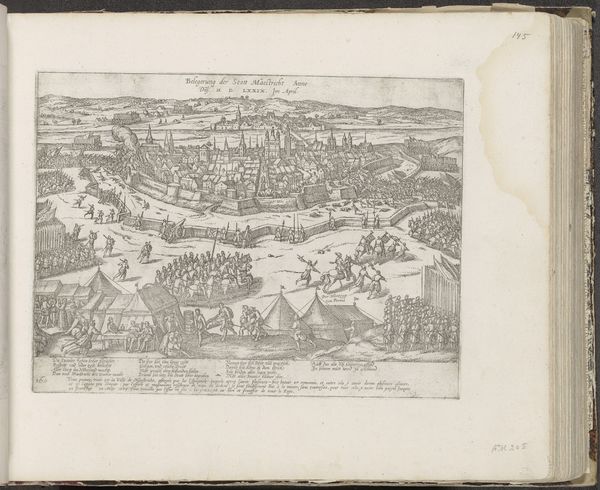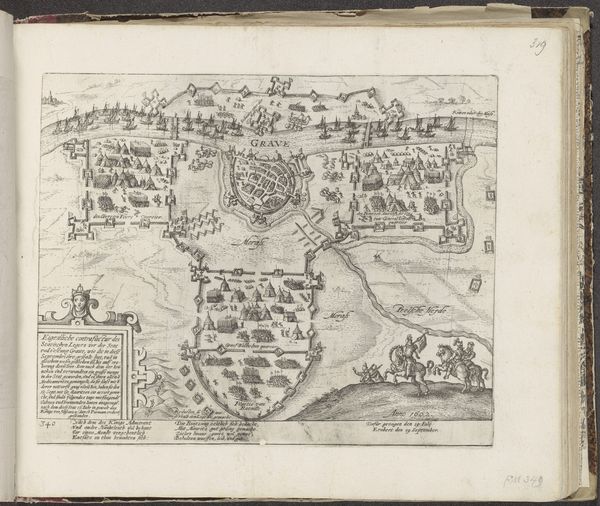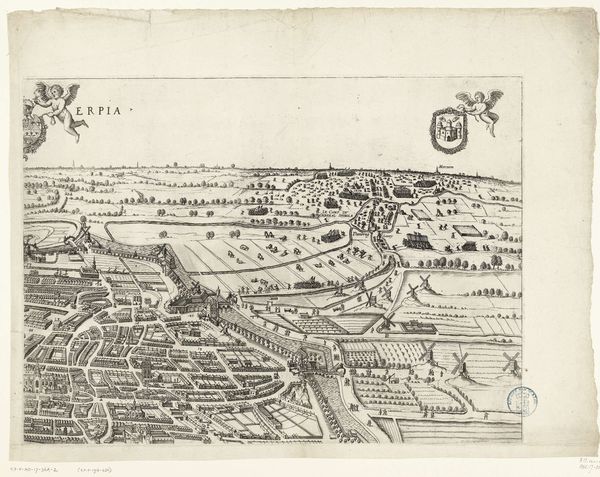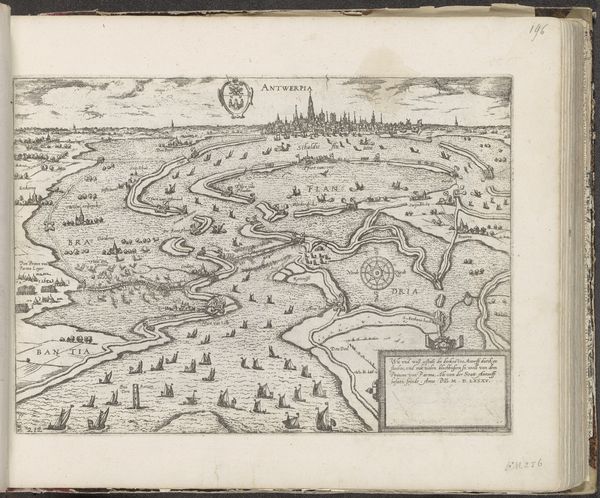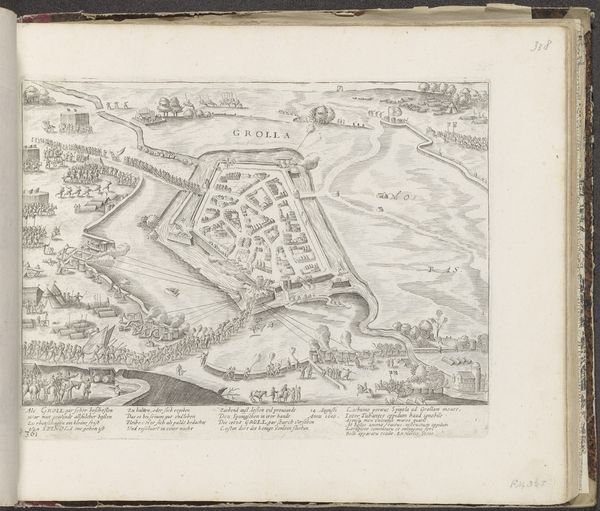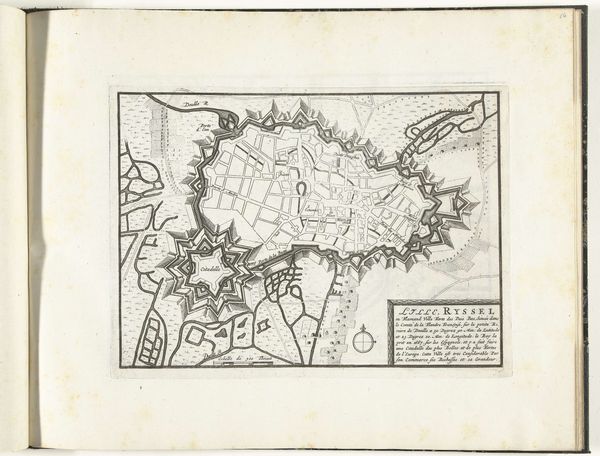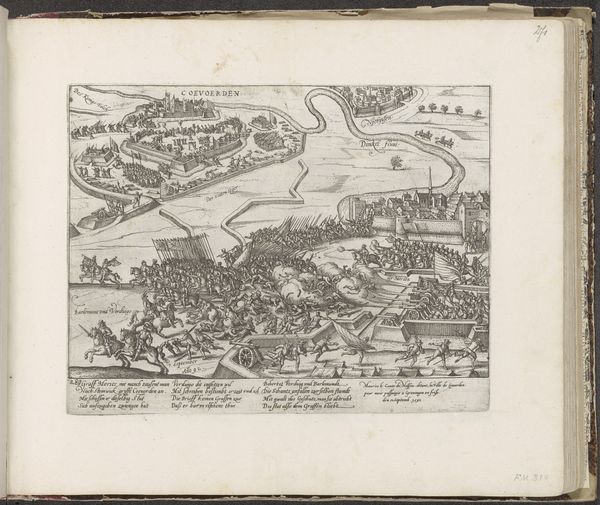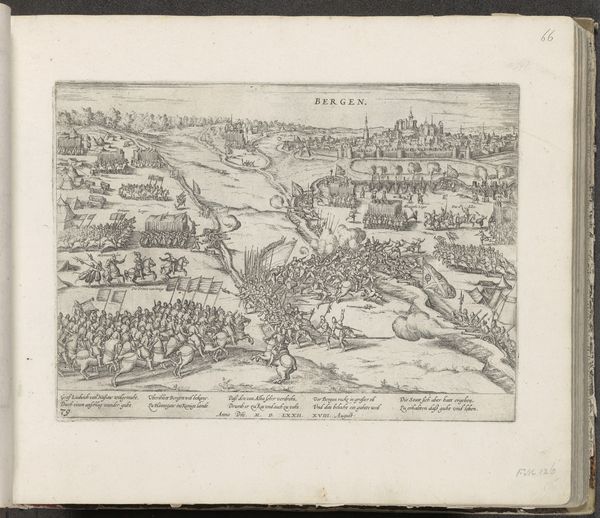
print, engraving
#
medieval
#
dutch-golden-age
# print
#
landscape
#
cityscape
#
engraving
Dimensions: height 240 mm, width 310 mm
Copyright: Rijks Museum: Open Domain
Curator: What a stark and mesmerizing sight, all in fine lines. It almost sings, this print titled "Beleg van Haarlem, 1572." Editor: "Beleg van Haarlem"… The Siege of Haarlem. Created between 1572 and 1574. Its almost like a bird's eye view, and anonymous, too, which speaks volumes, doesn't it? It feels so tense, like a chessboard right before the final move. Curator: Chessboard! That's perfect. Look at the landscape details—all so carefully etched—and the strategic positioning of forces... Dutch Golden Age meets the medieval period head-on. There's something deeply melancholic about knowing that each tiny mark here represents real human lives in turmoil. It’s almost funny to see it like a map now, so beautifully organized. Editor: Exactly! It lays out the ugly business of war in an aesthetic format. But what's crucial is to recognize that this siege wasn't just a blip. The Dutch revolt against Spanish rule meant brutal conflicts over identity and power, fundamentally reshaping the Netherlands. Curator: Those tiny ships on the horizon – they really hammer home the sense of impending doom. The print almost anticipates cinema. Imagine those scenes, amplified, romanticized… and reduced again to something that could fit on a page. So much reduction! Editor: Indeed. The cityscapes nestled in violence, yet preserved and reproduced. And of course, to have this narrative rendered through an engraving—a medium enabling mass production and dissemination – tells us about shaping public perception of this historical trauma. Curator: Its a potent reminder. Makes me think of all the battles being fought quietly today, the unseen sieges. How will those get mapped? Editor: A critical question to ask, indeed. The politics of visual representation demand constant engagement, challenging us to examine who is doing the mapping and which voices rise above, and why. Curator: It is the echoes, I suppose, which linger longest after the battles fade. Editor: The reverberations shape us. The image is not a reflection, but rather a historical force itself.
Comments
No comments
Be the first to comment and join the conversation on the ultimate creative platform.

